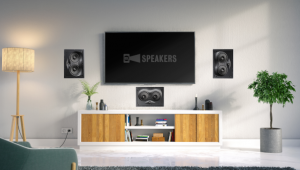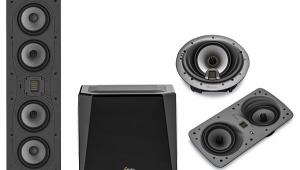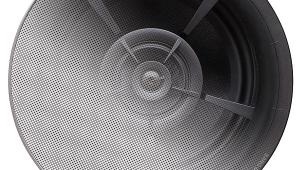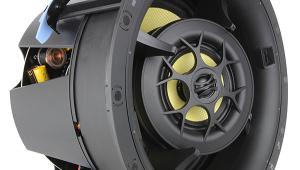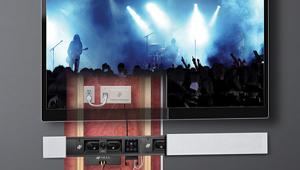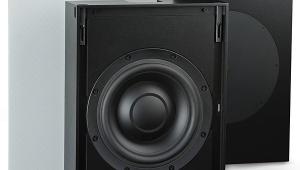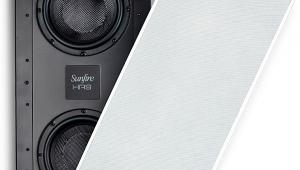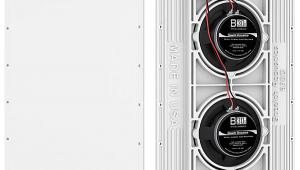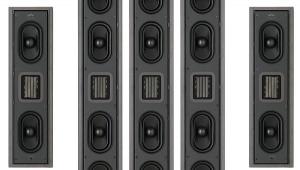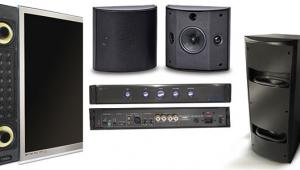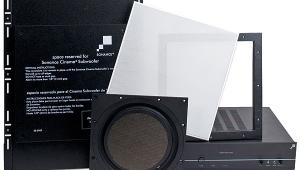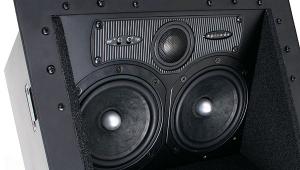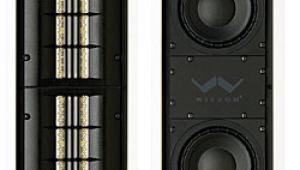It Came From Above Page 2
As the name implies, multiroom audio means piping audio streams to more than one room. There are systems where multiple audio streams can be sent to different rooms (multizone), but this article will deal only with controlling and sending a single stereo audio stream to various rooms. The scope of this article is two-fold: 1) how to install the multiroom system; 2) what audio products are used and why. Also, while much of the information here may be universal, the installation described in this article assumes that the structure is a standard wood-frame house with drywall walls and attic access.
The principle behind single-stream multiroom audio is pretty basic: Run your receiver's B-position speaker outputs to a four-, six-, or eight-channel output distribution box and then wire each room's speakers to their own output channel on the distribution box. There is, of course, the issue of individual-room volume control, which this article will deal with, as well.
Decisions, Decisions, Decisions
What do you need to begin? A distribution box, a pair of speakers for each room in which you want stereo audio, an in-wall volume control for each room (not mandatory but highly recommended), UL-approved speaker-level speaker wire, and either the name of a good installer or, if you plan to do this yourself, a host of common and specialty tools (see sidebar).
Achieving good stereo imaging (not to be confused with sound quality) is based on a couple of basic principles: You need two matched speakers receiving equal power and equal audio pathlengths to the prime listening area. When it comes down to it, the room and the prime seating area ultimately dictate where you will place your speakers. For a dedicated 5.1 home theater room, where audio is matched to video, the prevailing wisdom dictates that you try to line up the speakers (especially the front stage) as horizontally with the TV or movie screen as possible. If ambient background music is your goal, then in-ceiling speakers are often a better choice than in-walls. If you look at the home's floor plan (diagram E), you can see why in-wall speaker placement would have been problematic at best. To achieve the closest thing to equal pathlengths to the prime areas, in-ceilings were preferable. As an aside, in-ceiling speakers are easier to install (no firebreaks to contend with) and visually less obstructive.
As with every product category, architectural speakers run the gamut from repugnant bottom-feeder trash all the way to units costing a king's ransom. Those of us with taste but who must work for a living and shamelessly squander our earnings on food and heat typically choose a product somewhere in between these two extremes.
The Proper Gear and Assistance
Considering that installing in-ceiling speakers and in-wall volume controls in your home means you'll be cutting into your walls and ceiling—as well as crawling through an insulation-filled, dust-ridden attic—I would advise you to buy the best speakers you can afford. There are many areas in life where you can opt for the cheap stuff, but this should not be one of them. Also, I would strongly recommend that you seek a qualified installer to perform this operation. While the installation can be accomplished by the able do-it-yourselfer, the additional cost of having a trained, experienced installer perform the work is well-worth it.
For two of my last three projects (the 5.1-speaker and keypad installations), I hired Audio Video Entertainment in Laguna Niguel, California, to do the actual work, while I bothered the installer with questions and took photos. After completion of this project, I was glad I had not attempted it myself. Even though the actual installation of the in-ceiling speakers was easy, the volume-control installation was not—as you will see in the step-by-step photos.
 Upon the advice of AVE's proprietor Sean Fields, whose two companies install audio/video equipment (and hundreds of pairs of in-ceiling speakers a week) in everything from retrofits to multimillion-dollar track homes, I contacted SpeakerCraft. They recently introduced their AIM line of in-ceiling speakers, which feature drivers that can be fully pivoted and rotated within their own enclosure. Not only that, but the speaker and tweeter can be rotated independently. This design is quite handy, as it affords the latitude for speaker directionality not present in most current in-ceiling offerings. The AIM line ranges from the AIM One up to the AIM Five. I chose the AIM One ($400/pair) for this project.
Upon the advice of AVE's proprietor Sean Fields, whose two companies install audio/video equipment (and hundreds of pairs of in-ceiling speakers a week) in everything from retrofits to multimillion-dollar track homes, I contacted SpeakerCraft. They recently introduced their AIM line of in-ceiling speakers, which feature drivers that can be fully pivoted and rotated within their own enclosure. Not only that, but the speaker and tweeter can be rotated independently. This design is quite handy, as it affords the latitude for speaker directionality not present in most current in-ceiling offerings. The AIM line ranges from the AIM One up to the AIM Five. I chose the AIM One ($400/pair) for this project.
- Log in or register to post comments
